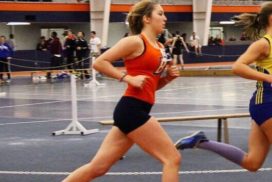SHOULDER INSTABILITY
What is Shoulder Instability?
Your shoulder is a “ball-and-socket” joint, which is made of the humerus ( the ball) and glenoid fossa (socket). The glenoid is a shallow indentation that comes off your shoulder blade and holds the the head of the humerus. Since a glenoid is shallow, it is common for the humerus to be dislocated as a result of blunt force or if the shoulder joint is already compromised by instability, a dislocation can occur without trauma.
There are two categories of Shoulder instability:
Shoulder Subluxation: The shoulder is partially dislocated. When the shoulder is partially out of the socket.
Shoulder Dislocation: The humerus becomes completely removed from the glenoid. It is possible, and common for the labrum (cartilage that buffers your glenoid) to be torn during a complete dislocation. A single shoulder dislocation can lead to chronic shoulder instability.
What are the Causes of Shoulder Instability?
Common causes for Shoulder Instability include:
- Blunt trauma to the shoulder
- A car accident
- Sports Injury
- Falling
What are the Symptoms of Shoulder Instability?
Symptoms of Shoulder Instability include:
- Feelings of instability in the shoulder
- Intense pain in and around the shoulder joint
- Visual change in shoulder’s appearance
- Numbness in arm
What are the Treatments for Shoulder Instability?
Non-Surgical Treatment
If your shoulder instability is not severe (subluxations or only 1 dislocation), you will receive a generalized treatment plan that will include:
- Rest
- Shoulder stabilization and immobilization
- Medication (oral and/or injections)
- Rehabilitation
Surgical Treatments
What is a labrum?
The labrum is a rim of cartilage surrounding the rim of the shoulder joint. The labrum deepens the shoulder socket and provides extra stability to the joint.
How is the labrum injured?
There are multiple mechanisms for labral injury. Most common injury is from a dislocation or overuse injury from an overhead throwing sport.
How will my labrum be repaired?
A labral repair is done arthroscopically, which means that the joint is visualized with a small camera and repaired through three small portals. The portion of the labrum detached from the bone will be re-attached with sutures and reinforced with small anchors into the bone.
How long will I stay in the hospital?
This surgery is typically done as ambulatory surgery, meaning you will go home the same day of surgery.
What are the possible risks and complications of surgery?
As with any surgery there is a risk of nerve damage and postoperative infection. Specific risks and complications include but aren’t limited to re-tear and post-op stiffness.
When can I drive?
You may not drive while taking pain medication or while wearing a sling.
When will I return to my prior level of function?
Typically, a 4-6 month period of rehabilitation is required for full function to return. Working hard in physical therapy, and strictly following the exercise program may shorten this process.
When can I start to run or return to sports?
Running is not recommended for the first 3 months after surgery. Running does produce stress on the shoulder joint, and will be detrimental to the healing process. You can ride a recumbent bike a couple weeks after surgery and after a few months you can progress to Elliptical machine without arm motions. Return to sport will be based on your progress with physical therapy and sport of choice. You can expect to return to full strength in six months.





